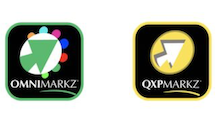Jonathan Malone-McGrew, Senior Director, Engagement – Solimar Systems, Inc., discusses the impact of COVID-19 on sectors such as paper, print and mail, and how we can stay abreast of the challenges ahead.
It should be safe to say at this point that 2020 isn’t exactly what any of us expected; the challenges of COVID-19 have had a quick and widespread impact on the world. From countries big to small, people, their families, businesses, and, generally, our way of life has been upended. With many urban centres asking or ordering people to self-isolate in their residences, it is a good reminder of the importance of critical communications: paper, print, and mail. But also, it’s a reminder that digital technologies are helping keep the flow of commerce moving forward.
History has proven, though, that out of great adversity comes innovation and renewed passion to rebuild. While the global pandemic is impacting all of us in ways we never imagined, truly this is where disaster recovery (DR) plans come into play. And from this, we likely will see new considerations for this type of event come into DR plans for businesses and personal life planning in the future. It reminds us of how important paper, print and the physical movement of the mail still is today. It also highlights the importance of a coordinated digital communication plan so that what is communicated is relevant and, most importantly, accurate.
Let’s try to look at some ways we can take this new world situation and improve our businesses in the print, mail and digital communications industries. Here are some interesting facts about the adoption of smartphones and the internet globally and in the U.S. where our Solimar Systems’ Headquarters are located:
• World population today is estimated at 7.6 billion (U.S. Census Bureau).
• United States population is estimated at 327 million (U.S. Census Bureau).
• Smartphone users globally are estimated at 3.5 billion (Statista).
• Smartphone users in the U.S. are estimated at 81% or about 264 million (Pew Research).
• Internet users globally are estimated at 4.13 billion (Statista).
• Internet users in the U.S. are estimated at 293 million (Statista).
• 52% of internet traffic Globally is attributed to mobile devices (Statista).
• 48% of internet traffic in the U.S. is from mobile devices (Statista).
• 71% of rural Americans have access to the internet from mobile devices (Pew Research).
• 63% of rural Americans have access to broadband internet (Pew Research).
The data is interesting, but what does all of this mean for businesses that print, mail and digitally deliver communications locally, regionally or globally? From our perspective, this is an opportunity to look at what you have had to do during these hard times and take some notes about your communication and production processes. You might be in a number of different industries such as financial, healthcare, government, education, non-profit, retail, food and beverage, etc. You might also produce a variety of things from correspondence letters, statements, bills, explanation of benefits, marketing flyers, postcards, flexible or corrugated packaging, posters or even the labels that keep everything moving from a manufacturing, stocking and selling perspective.
Now is the time to take some notes. As you trip over difficult processes in your print production environment related to either remote working, shifting production due to COVID-19 concerns or closures, disaster recovery and more, keep a journal of the challenges.
Why? Because on the other side of this, and perhaps as you go, these are areas where you can leverage workflow technology to help improve your business continuity for the future. Look for areas where automation would have helped, remote reporting and visibility would have saved headaches and time, and most of all, where you can squeeze cost out and drive a leaner running environment.
Plus, there are technologies that can help you bridge the physically printed and digitally delivered communications pieces that can vastly change the perceived value of your brand, your client’s brand and provide the most relevant and impactful information. Technologies like dynamically-added and data-driven QR codes can launch web-based Augmented Reality (AR) that can be variable by location and the known information of the recipient. Moreover, it can be updated on the fly…or in real-time to change the message as new details become available.
In a COVID-19 situation, it means you could message important information, offers and directions to your recipients without having to change the printed piece. But you would also have the power of print in their hands, which has been proven by all the Two Sides research to be of significant value to consumers.
[sc name=”submit-news” ]
[sc name=”whatsapp_subscribe” ]
SOLIMAR
https://www.solimarsystems.com





















